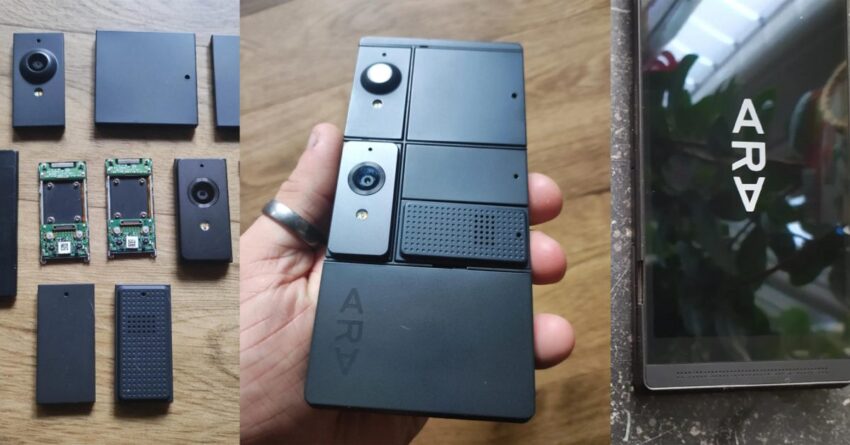
google s modular project ara smartphone shown New videos have surfaced showcasing prototypes of Google’s once-promising modular smartphone, Project Ara, nearly a decade after the project was officially discontinued.
google s modular project ara smartphone shown
Background of Project Ara
Project Ara was introduced by Google in 2013 as an innovative approach to smartphone design, aiming to revolutionize the way users interacted with their devices. The concept was simple yet ambitious: a modular smartphone that would allow users to customize and upgrade their devices by swapping out individual components, such as the camera, battery, and processor. This approach was intended to extend the lifespan of smartphones, reduce electronic waste, and cater to the diverse needs of consumers.
The project was spearheaded by the Advanced Technology and Projects (ATAP) group within Google, which was known for its focus on experimental technologies. The vision was to create a smartphone that could adapt to the changing needs of users over time, rather than becoming obsolete as new models were released. The modular design was expected to empower users by giving them the ability to choose the features they wanted, ultimately leading to a more personalized device.
The Rise and Fall of Project Ara
Despite the initial excitement surrounding Project Ara, the project faced numerous challenges that ultimately led to its demise. One of the primary concerns was the complexity of creating a seamless user experience with interchangeable modules. While the idea of swapping out components was appealing, the reality of ensuring compatibility and performance across various modules proved to be a significant hurdle.
Additionally, the smartphone market was rapidly evolving, with manufacturers focusing on sleek designs and integrated components. As consumers gravitated towards devices that offered a cohesive experience, the modular concept began to lose its appeal. By 2016, Google announced that it would no longer pursue Project Ara, citing the need to focus on other priorities within the company.
Recent Developments: New Videos Surface
Fast forward to 2025, and interest in Project Ara has been reignited with the emergence of new videos showcasing prototypes of the modular smartphone. These videos provide a glimpse into what could have been, highlighting the innovative design and potential of the device. The prototypes reveal various modules that were developed during the project, including camera units, batteries, and even specialized sensors.
The videos, which have been circulating on social media and technology forums, showcase the modular components being swapped in and out of the smartphone’s frame. This demonstration emphasizes the core concept of Project Ara: the ability to customize and upgrade a smartphone according to individual preferences. Viewers are reminded of the excitement that surrounded the project during its early days, as well as the potential it had to change the smartphone landscape.
The Design and Functionality of Project Ara
The design of Project Ara was characterized by its unique architecture, which allowed for easy access to the modular components. The smartphone was built around a structural frame, known as the “endoskeleton,” which housed the essential hardware. Users could then attach various modules to this frame, creating a device tailored to their specific needs.
Some of the notable modules that were developed included:
- Camera Modules: Users could choose from different camera options, ranging from basic lenses to high-end photography equipment.
- Battery Modules: The ability to swap out batteries meant that users could extend their device’s battery life based on their usage patterns.
- Sensor Modules: Specialized sensors for health tracking, environmental monitoring, and more were also part of the modular lineup.
This modularity not only allowed for customization but also meant that users could replace individual components without having to purchase an entirely new device. This approach was seen as a sustainable alternative to the traditional smartphone lifecycle, where devices are often discarded in favor of newer models.
Implications of Project Ara’s Vision
The vision behind Project Ara extended beyond just a new smartphone design; it aimed to address broader issues within the technology industry. One of the most significant implications was the potential reduction of electronic waste. By allowing users to upgrade specific components rather than replacing entire devices, Project Ara could have contributed to a more sustainable approach to technology consumption.
Moreover, the project highlighted the growing trend of personalization in technology. As consumers increasingly seek devices that reflect their individual preferences and lifestyles, the modular smartphone concept resonated with a desire for customization. Project Ara was ahead of its time in recognizing this shift, and its failure to materialize raises questions about the future of consumer electronics.
Stakeholder Reactions and Community Interest
The recent resurgence of interest in Project Ara has sparked discussions among technology enthusiasts, industry experts, and former stakeholders. Many have expressed nostalgia for the project and its innovative approach to smartphone design. Some former employees of the ATAP group have shared their thoughts on social media, reminiscing about the excitement and challenges they faced while working on Project Ara.
Community interest has also been reignited, with forums and social media platforms buzzing with discussions about the potential of modular smartphones. Some enthusiasts have even taken it upon themselves to create DIY modular devices inspired by Project Ara, showcasing the enduring appeal of the concept.
The Future of Modular Technology
While Project Ara may have been discontinued, the idea of modular technology is far from dead. Several companies have attempted to explore similar concepts in recent years, albeit with varying degrees of success. For instance, companies like Fairphone have focused on creating sustainable smartphones with easily replaceable components, catering to environmentally conscious consumers.
Additionally, the rise of 3D printing technology has opened new avenues for modular design, allowing users to create custom components tailored to their specific needs. This shift towards personalization and sustainability in technology may pave the way for a resurgence of modular devices in the future.
Conclusion
The recent videos showcasing prototypes of Project Ara serve as a reminder of the innovative spirit that characterized Google’s ambitious project. Although the modular smartphone never reached the market, its vision of customization, sustainability, and user empowerment continues to resonate with consumers and industry experts alike. As the technology landscape evolves, the lessons learned from Project Ara may inspire future endeavors in modular design, potentially leading to a new era of personalized and sustainable smartphones.
Source: Original report
Was this helpful?
Last Modified: October 29, 2025 at 2:37 pm
2 views














